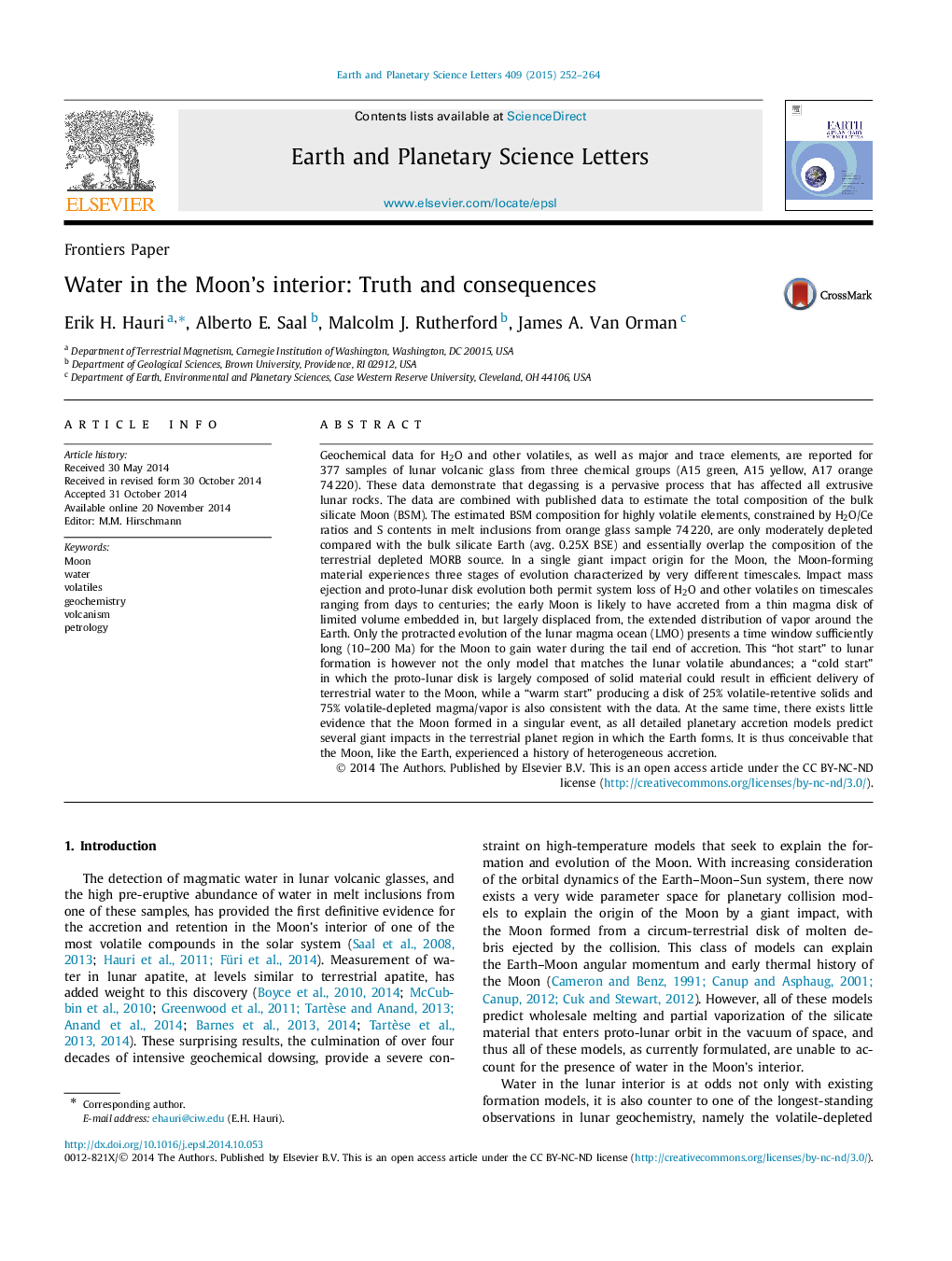| کد مقاله | کد نشریه | سال انتشار | مقاله انگلیسی | نسخه تمام متن |
|---|---|---|---|---|
| 6428805 | 1634747 | 2015 | 13 صفحه PDF | دانلود رایگان |

- We report the volatile and trace element compositions of 377 lunar volcanic glasses.
- We use this data to estimate the composition of the bulk silicate Moon (BSM).
- The BSM composition that is considerably less volatile-depleted than prior estimates.
- The results are compared with models of giant impacts, lunar disks and magma oceans.
- We conclude that the Moon likely formed by multi-stage heterogeneous accretion.
Geochemical data for H2O and other volatiles, as well as major and trace elements, are reported for 377 samples of lunar volcanic glass from three chemical groups (A15 green, A15 yellow, A17 orange 74â220). These data demonstrate that degassing is a pervasive process that has affected all extrusive lunar rocks. The data are combined with published data to estimate the total composition of the bulk silicate Moon (BSM). The estimated BSM composition for highly volatile elements, constrained by H2O/Ce ratios and S contents in melt inclusions from orange glass sample 74â220, are only moderately depleted compared with the bulk silicate Earth (avg. 0.25X BSE) and essentially overlap the composition of the terrestrial depleted MORB source. In a single giant impact origin for the Moon, the Moon-forming material experiences three stages of evolution characterized by very different timescales. Impact mass ejection and proto-lunar disk evolution both permit system loss of H2O and other volatiles on timescales ranging from days to centuries; the early Moon is likely to have accreted from a thin magma disk of limited volume embedded in, but largely displaced from, the extended distribution of vapor around the Earth. Only the protracted evolution of the lunar magma ocean (LMO) presents a time window sufficiently long (10-200 Ma) for the Moon to gain water during the tail end of accretion. This “hot start” to lunar formation is however not the only model that matches the lunar volatile abundances; a “cold start” in which the proto-lunar disk is largely composed of solid material could result in efficient delivery of terrestrial water to the Moon, while a “warm start” producing a disk of 25% volatile-retentive solids and 75% volatile-depleted magma/vapor is also consistent with the data. At the same time, there exists little evidence that the Moon formed in a singular event, as all detailed planetary accretion models predict several giant impacts in the terrestrial planet region in which the Earth forms. It is thus conceivable that the Moon, like the Earth, experienced a history of heterogeneous accretion.
Journal: Earth and Planetary Science Letters - Volume 409, 1 January 2015, Pages 252-264